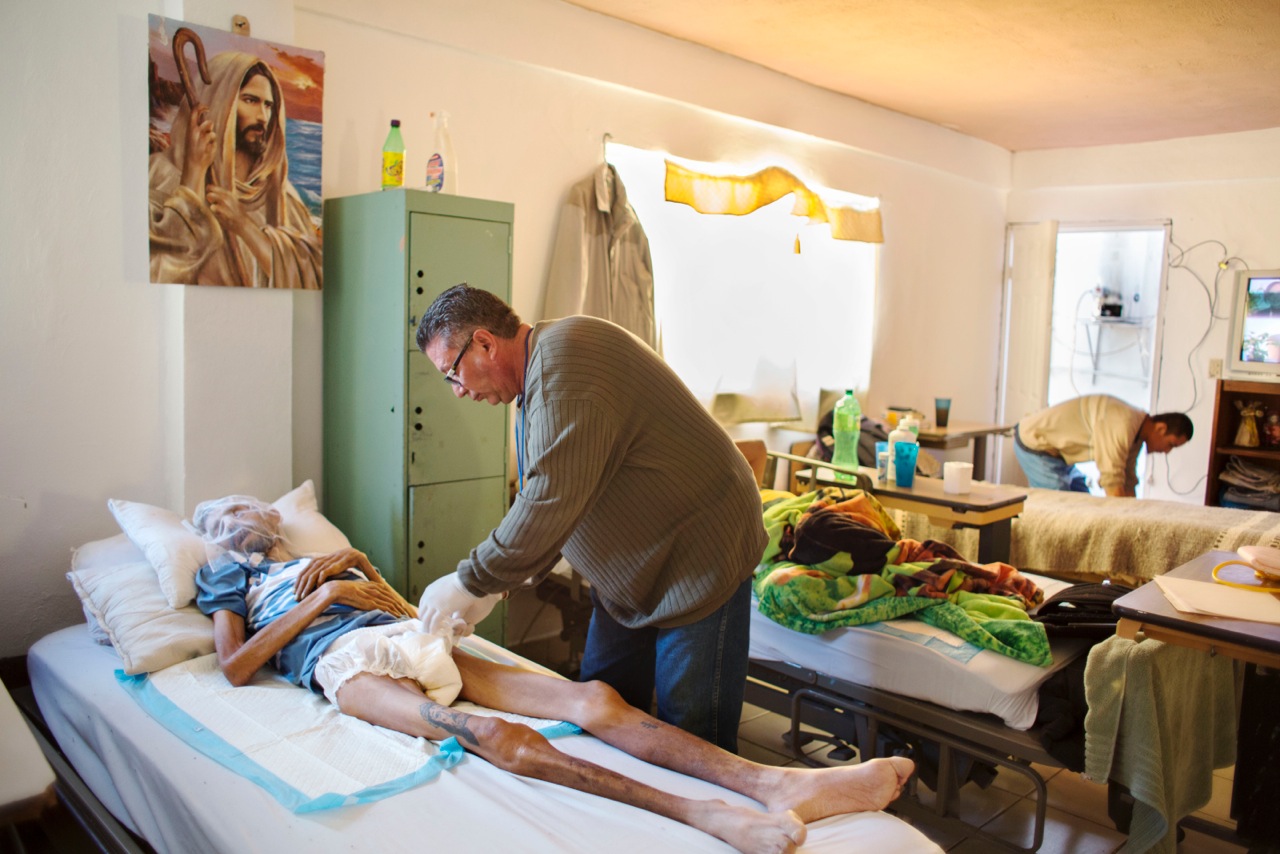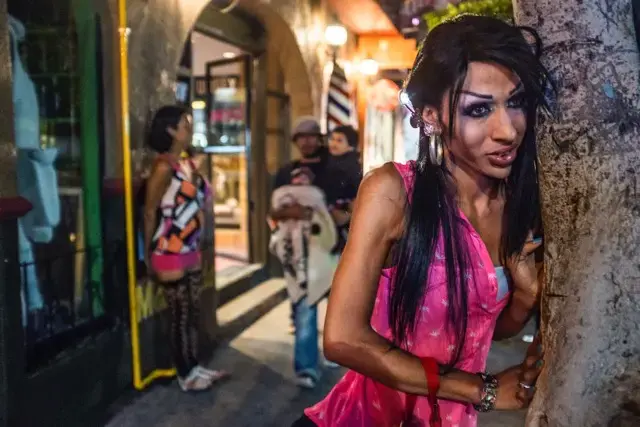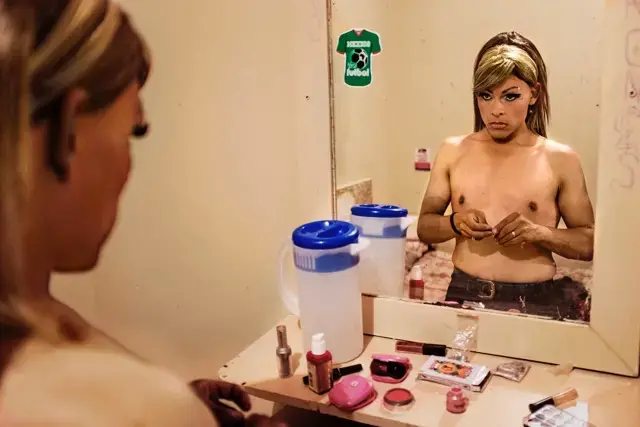When photographer Malcolm Linton and I went to interview Fernanda Sánchez Ochoa at a boardinghouse in Tijuana's red light district in September 2014, we took Rubi Juarez to help us translate.
Malcolm speaks Spanish fluently and I stumble by, but Fernanda spoke quickly with lots of slang that sometimes was difficult for even native speakers to understand. We asked Rubi to translate because not only was she bilingual, she was a transgender woman, as was Fernanda. We thought it would put Fernanda at ease.
As we neared the boardinghouse, we walked passed by Motel el Deseo, the Desire Motel, which is a hangout for transgender women selling sex. Several of the tarted-up women glared at Rubi, who was dressed modestly and looked like an office worker, which was her profession. Although she had grown up in Tijuana and had transitioned from Alejandro to Rubi 11 years earlier, she rarely visited this part of town. "They think I'm competition," she said, somewhat startled.
Transgender women and men in most every country face extraordinary stigma and discrimination—including from their own families, who often disown them. Depression, substance abuse, homelessness, and what's called "suicidal ideation" are common. They also frequently confront stereotypes, and Rubi, the first transgender in Baja to obtain an official change of identity, defies them at most every turn.
Rubi comes from a family that accepted her gender identity at a young age. They were poor, but she started seeing a psychologist at 14 to help her adjust. "I was a nerd and knew I needed someone to help me," says Rubi, who as an adult started an advocacy group called Casa Trans. "I do this activism because I got lucky and I have to do something and be a role model for health."
Small studies in Tijuana of transgender women led by a binational team of researchers based at the University of California at San Diego have found that 1 in 5 are infected with HIV. Only gay men in the city have as high a prevalence. When we met with Fernanda, she told us she had been tested "30 times" and was always negative. (Rubi also was negative.)
Fernanda's story was all too familiar to Rubi. As a 14-year-old boy named Yovani, Fernanda convinced her father to let her move away from their home in Lázaro Cárdenas to perform in a drag bar an hour away in Zihuatenjo. She started snorting cocaine and injecting olive oil into her hips and rear end to make them look more feminine. "I put liters of it in," she said. One time the oil went to her lungs and she ended up being hospitalized.
Violence had become a routine part of her life. "Most of the violence is the other girls, not the customers," she said. Her daily routine consisted of selling sex, smoking crystal methamphetamine, watching videos of telenovelas, and hanging out with friends. She had piles of dolls and stuffed animals on her bed, and there was an intense loneliness about her.
Fernanda had become estranged from her family and badly wanted to return home for a visit. "I want to apologize—not for who I am, but because I made them have so many problems," she said. "And I would tell them I love them."
Although nearby San Diego has a clinic that specializes in transgender health—including provision of safe hormone injections, counseling for transition issues, and HIV/AIDS prevention services—no such care is available in Tijuana. And Fernanda, like many of the transgender people who live in Tijuana, did not have the papers needed to cross the border. Even for those who can cross, their Mexican government health insurance was of no value on el otro lado (the other side), and many cannot afford U.S. healthcare fees.
The U.S. Food and Drug Administration in 2012 approved the daily use of anti-HIV drugs for uninfected people at high risk, which studies have shown offers almost complete protection. This so-called pre-exposure prophylaxis, or PrEP, is being aggressively offered to transgender communities in several U.S. cities now. Mexico to this day—like many countries (even Canada)—has not yet approved the use of PrEP. "There's no activism or leadership around a lot of these issues," Davey Smith, an HIV/AIDS clinician who provides care at the transgender clinic in San Diego, told me.
Smith is part of a binational team based at the University of California at San Diego that has been conducting research and training of medical students in Tijuana for the past decade. "Tijuana is its own little place: That's probably the biggest problem," said Smith. "It's the Vegas of Mexico. Everything goes and nothing's talked about."
Fernanda knew she was in one of the highest risk groups for HIV infection. A recent study of more than 2,000 transgender women in Los Angeles found that smoking crystal meth doubled the likelihood that they would become infected; globally, transgender sex workers have an HIV prevalence of 27.3 percent, according to the most authoritative estimates available. She also understood that condoms could protect her from the AIDS virus and other sexually transmitted infections. But knowledge only goes so far. "Sometimes the customers are very bad and make you do it without condoms," she said.
In November 2014, Fernanda tested positive for HIV. She said she wasn't worried so much about living with the virus, but she did fear la burla—the mockery.

Education Resource
Meet the Journalists: Jon Cohen and Malcolm Linton
Journalist Jon Cohen and photographer Malcolm Linton have traveled to approximately 50 countries to...




















